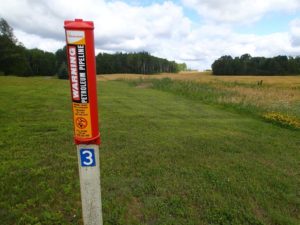By Matt Doll, Minnesota Environmental Partnership.
Last week, the Public Utilities Commission declared that the environmental impact statement (EIS) for Enbridge’s proposed Line 3 oil pipeline was inadequate, and that the Department of Commerce would have to revise it within 60 days. The required changes are few in number, but this will delay the PUC’s final decision on whether to approve Line 3, originally estimated to conclude in April. This is a step in the right direction. The PUC commissioners should have complete information on the pipeline’s impacts before making a decision. And they made an encouraging statement that the pipeline could not be constructed before a survey of cultural resources – resources important to Minnesota’s indigenous communities – can be completed.
When the commissioners make their final decision on whether the new Line 3 will get a certificate of need and move forward, they should protect Minnesotans by taking into account what we know about this pipeline.
- The Department of Commerce has recommended that the replacement Line 3 not be granted a certificate of need because Minnesotans don’t need it – and its risks outweigh any benefits.
- Minnesota’s demand for petroleum continues to fall – oil sales in our state are down 19% since 2004. What’s more, there’s so much unused capacity in the existing pipeline system that even without the old or the new Line 3, the current system could transport the same amount of oil and still have than 600,000 barrels per day of extra capacity.
- Minnesota’s tribal communities have repeatedly stated that this pipeline would be an unacceptable threat to their cultural resources like wild rice and clean water, which are legally guaranteed to them by treaty. A Line 3 spill would release toxic tar sands oil into these lands and waters – and once tar sands spills, restoring the site is virtually impossible.
But it’s not just water and land pollution that would cost Minnesotans – Line 3 would be a hit to our pocketbooks. When a pipeline is built, needed or not, local oil customers end up paying transportation costs even if the pipeline is underused, due to shipping rates set by the Federal Energy Regulatory Commission. It is estimated that Minnesotans would end up paying at least $1 billion over 15 years in higher fees for the pipeline to move oil through our state to Wisconsin, even though we don’t need to use it here. The new US Bank Stadium cost roughly that same amount – now imagine if instead of Minnesotans using it, it would only host Green Bay Packer games. Regardless of one’s team affiliation, the analogous Line 3 makes little sense for Minnesotans.
Finally, the oil carried by Line 3 would be Alberta tar sands oil, which emits significantly more carbon pollution than conventional crude. This would exacerbate climate change at a time when its effects are becoming increasingly apparent – and dangerous. We can’t move forward on protecting future generations from climate change while building more unnecessary and expensive fossil fuel infrastructure.
We call on the PUC to continue looking at the facts, and to make the right decision on Line 3 in 2018. This pipeline isn’t needed by Minnesotans – but we would pay for it, both with our dollars and with the damage it would do to our land, air, and water.
